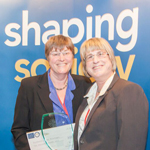by Lucie Cluver
Our work often feels like a series of battles against an enemy that outwits us.
Despite real global progress in preventing and treating HIV/AIDS (PDF, UNICEF website), children and adolescents remain left behind. Every hour, 30 adolescents are infected with HIV. The situation is most severe in Southern and Eastern Africa, which accounts for nine in 10 of adolescent AIDS deaths. AIDS is the leading cause of death amongst adolescents in the region.
We have realised that if we are to have any chance of winning the battle, academics need to work in close partnership with governments, UN agencies and policymakers – and with teenagers themselves. Our research studies are developed together with these groups, which often leads us to unexpected questions and findings. Continue reading
 Rhian Jones is a Senior Information Analyst for the Insights team at ESRC.
Rhian Jones is a Senior Information Analyst for the Insights team at ESRC. 

